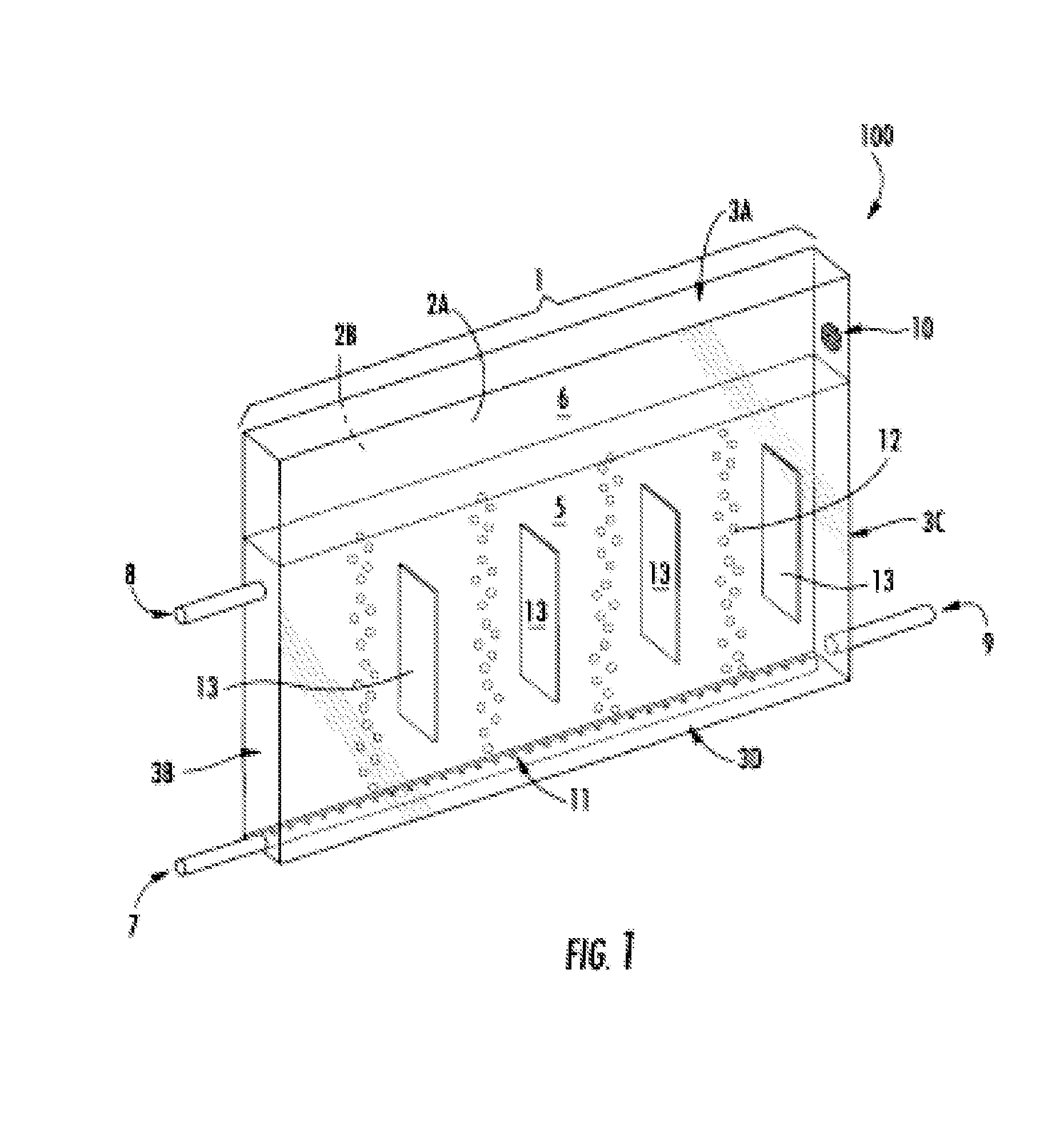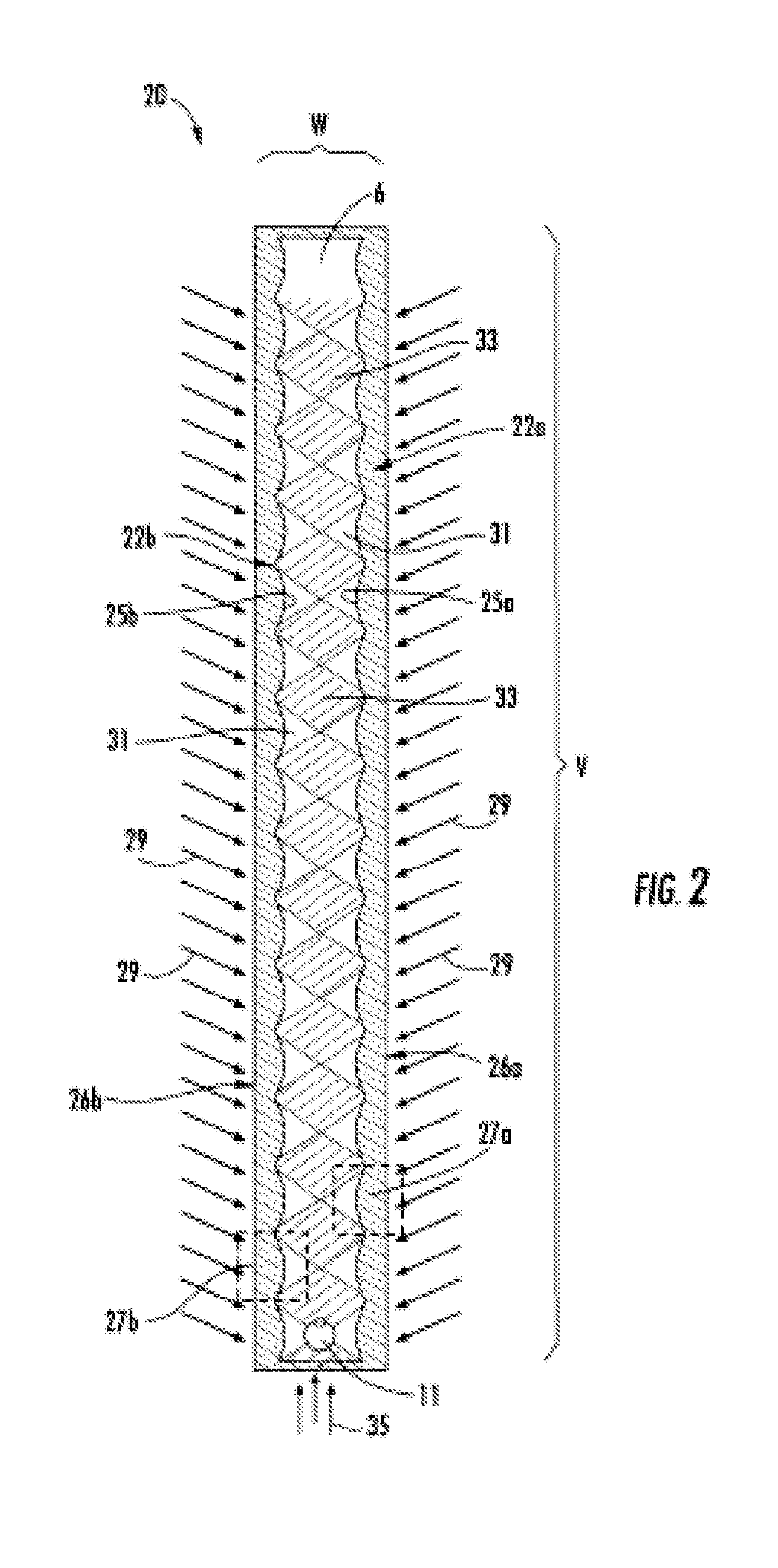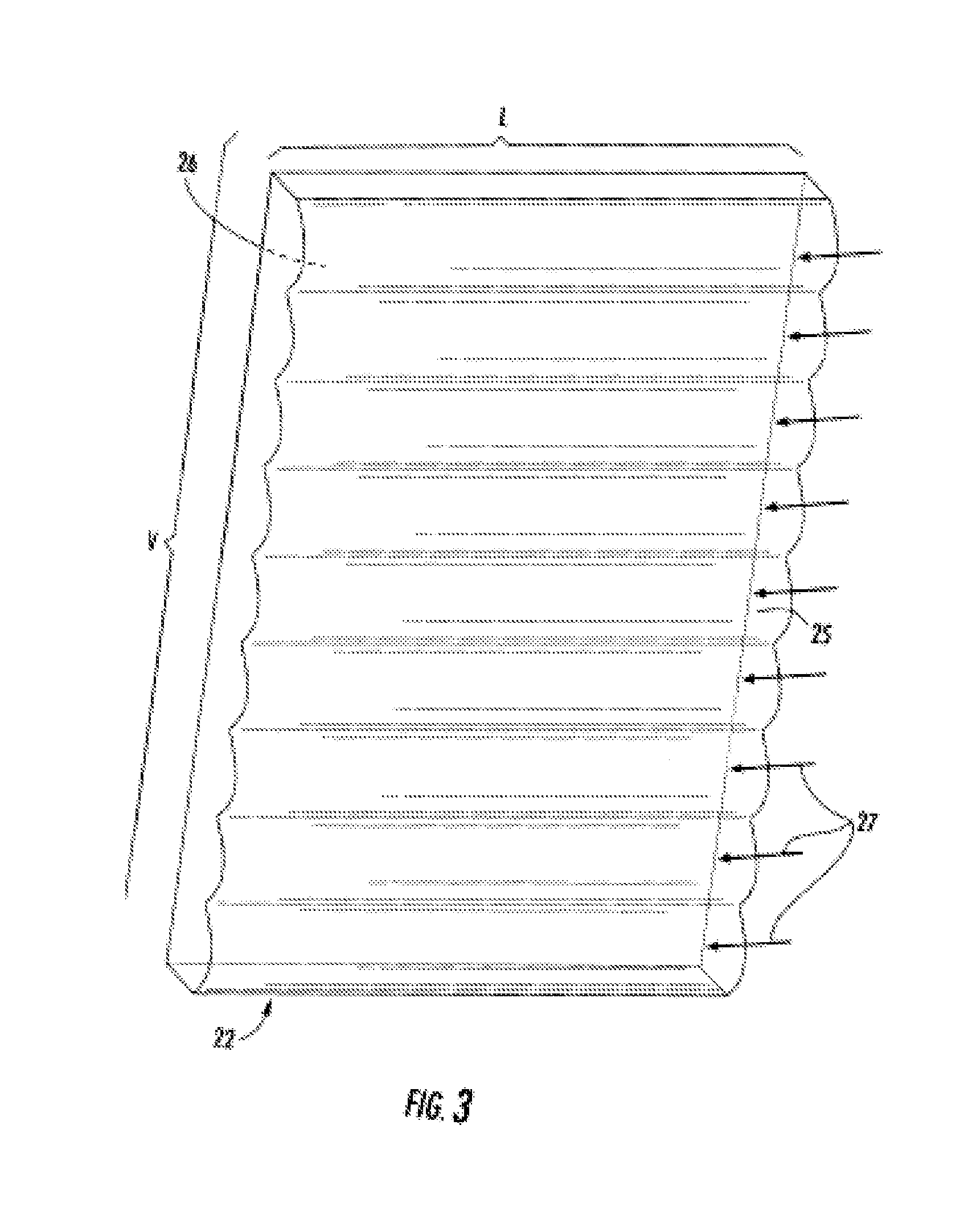Lensed and striped flat panel photobioreactors
a flat panel photobioreactor and striped technology, applied in bioreactors/fermenters, specific use bioreactors, microorganism after-treatment, etc., can solve the problems of high cost, high cost, and inefficient use of open ponds, so as to reduce the total number of chambers, reduce the heating experience, and reduce the effect of capital and operational costs
- Summary
- Abstract
- Description
- Claims
- Application Information
AI Technical Summary
Benefits of technology
Problems solved by technology
Method used
Image
Examples
Embodiment Construction
Introduction
[0031]The invention pertains to photobioreactors for growing photosynthetic micro-organisms and a method of growing photosynthetic micro-organisms (preferably, microalgae). The invention is most often explained in terms of a flat panel photobioreactor and preferably is a flat panel photobioreactor. However, the invention is not so limited. Accordingly, other types of photobioreactors may be employed in accordance with the invention as long as the micro-organisms move along a roughly discernible directional path.
[0032]In general, in the photobioreactors of the current invention, one or more walls of a growth chamber are formed or altered so that incident light (preferably incident sunlight) hitting the chamber's walls reaches some regions of chamber in a greater degree than other regions, thereby creating a multitude of alternating light and dark regions within the chamber. As the photosynthetic micro-organisms flow directionally through the chamber, the micro-organisms e...
PUM
| Property | Measurement | Unit |
|---|---|---|
| height | aaaaa | aaaaa |
| height | aaaaa | aaaaa |
| height | aaaaa | aaaaa |
Abstract
Description
Claims
Application Information
 Login to View More
Login to View More - R&D
- Intellectual Property
- Life Sciences
- Materials
- Tech Scout
- Unparalleled Data Quality
- Higher Quality Content
- 60% Fewer Hallucinations
Browse by: Latest US Patents, China's latest patents, Technical Efficacy Thesaurus, Application Domain, Technology Topic, Popular Technical Reports.
© 2025 PatSnap. All rights reserved.Legal|Privacy policy|Modern Slavery Act Transparency Statement|Sitemap|About US| Contact US: help@patsnap.com



